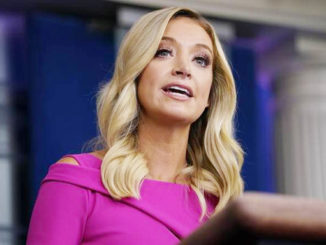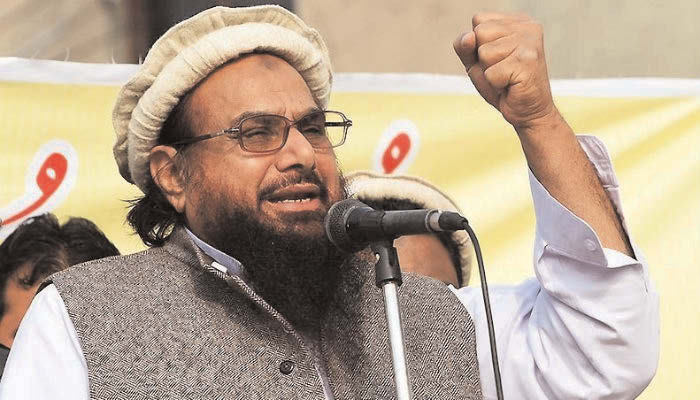Role of Indian Women in the UN Peace-keeping Missions
A contingent of 125 Indian women officers and support personnel recently served in the UN peace-keeping mission in Liberia. UN chief Ban Ki-moon praised and thanked India‘s women peacekeeping unit in Liberia. Hailing them as an inspiration for all, he emphasized that their conduct served as an example of how women can help the UN in its efforts to combat sexual exploitation and abuse. Through their work, they managed criminality, deterred sexual and gender-based violence and helped rebuild safety and confidence among the local population. He paid rich tributes to the outstanding contribution of the Government of India in support of the UN peace operations.
Neerja Bhanot’s story:
This is an awe-inspiring, jaw-dropping example of the bravery of a 23 years’ young Indian women who gave the ultimate sacrifice of her life while doing her duty and protecting those under her protection like modern day durgA who fought the demons of Abu-Nidal terrorist group! Neerja Bhanot was the senior flight purser on Pan Am Flight 73 flying from Mumbai to the US, carrying 361 passengers and 19 crew members which was hijacked by four armed Libya backed terrorists on 5 September 1986 at Karachi airport in Pakistan. After the terrorists boarded the plane, Neerja informed the cockpit crew. The three-member American cockpit crew of pilot, co-pilot and the flight engineer literally fled the airplane. She decided to save the passengers instead of saving herself and took charge as the senior-most cabin crew. The terrorists shot an American to death and threw his body on to the tarmac. The terrorists then ordered Neerja to collect the passports of all the passengers in order to identify the other Americans. Neerja and her crew hid the passports of the 41 Americans on board; some under a seat and the rest down a rubbish chute so that the hijackers could not differentiate between American and Non-American passengers. After 17 hours, the hijackers opened fire and set off explosives. She opened one of the doors, flung open an emergency chute, and started assisting passengers to escape. She was shot dead while protecting three unaccompanied American children from a hail of bullets. She was recognized internationally as “the heroine of the hijack” and was the youngest recipient of the Ashok Chakra Award India’s most prestigious gallantry award for bravery during peace time. She posthumously received multiple awards for her courage from the US and Tamgha-e-Insaniyat from Pakistan.
Women commander escorting Obama for guard of honor:
The theme of this year’s Republic day parade was Nari Shakti (woman power). The republic day parade saw woman contingents of the army, navy and the air force marching down Rajpath for the first time. Government of India must be commended for this initiative. It created a powerful symbol of women’s empowerment and provided an excellent role modern for all the young Indian girls who saw a proud Wing Commander Pooja Thakur, the first lady officer leading the Inter-Service Guard of Honor inspected by US President Barack Obama at Rashtrapati Bhavan. Pooja Thakur said in an interview that she hoped that she would inspire more women to join the armed forces
Demography and Shakti:
India is facing the terrible menace of female feticide and female infanticide because of traditional preference for a male child. Infant Mortality Rate in India for 2014 is 43.19 per 1000 live births. While the rate for male child is 41.9 deaths/1,000 live births; for females it is 44.63 deaths/1,000 live births (2014 estimate). Indian society has to change the attitude towards female feticide. Mother-in-laws, wives and mothers also participate in female feticide; so do some female doctors, radiologists and nurses! Female feticide is a problem of the entire society. Similarly, in cases of honor killings, sometimes, female relatives are equally guilty across the religious divide in India.
Gender ratio is an important statistic revealing decline in female population compared to that of men in India. While gender ratio in 1947 was almost equal, later on there was alarming decrease in number of females. This decline in post-independence era is due to availability of advanced medical technology for prenatal sex selection and female feticide. Asian countries like China and Pakistan also show similar trends in declining gender ratio. Main reason for decline in gender ratio is selective female feticide and female infanticide. Biased treatment, selective neglect of the girl-child and positive preference for male child are the reasons behind declining gender ratio. In the 2011 Census, the gender ratio in India was 940 females per 1000 of males. Per Census 2001 there were only 933 females per 1000 males. For the last two of the decades there has been a slight increase in the gender ratio due to sustained campaigns by the government in banning prenatal sex determination. Despite this, there are some states where the gender ratio is still low. Major outlier is the state of Haryana which has the lowest gender ratio in India of 877 of females per 1000 of males.
In Puducherry and Kerala, the number of women is more than the number of men because of selective emigration of males for jobs abroad. Kerala has 1084 females per 1000 males. In more advanced states like Karnataka, Andhra Pradesh and Maharashtra where the gender ratio 2011 is showing considerable signs of improvement. The main cause of this gender bias is lack of awareness & inadequate education. The declining gender ratio, if not corrected and normalized soon can eventually create tremendous sociological and law and order problems for the nation. There are some important lessons to be learnt from save the girl child campaigns. These campaigns have to be re-invigorated at all levels and applied irrespective of religion. We have to find a way ahead to mitigate this social malady.
Shakti Symbolism and Challenges Ahead:
We still have the challenge of improving the female literacy rate in India. Though the government has made a law that every child under the age of 14 should get free education, the problem of illiteracy is still at large. In 1947, the literacy rate was only 12%. In the 2011 census, literacy rate in India was 74.04%. The female literacy level per 2011 census is 65.46% where the male literacy rate is over 80%. While the adult literacy rates are lower and can not be increased, focus has to be on improving the literacy rates for younger population. The numbers of children who do not get education in the rural areas are still very high. Female literacy rate is still lower than male literacy rate because people in rural areas do not value education for girls. Many parents in rural areas do not allow their female children to go to schools because of cultural and social reasons. That has to change and a massive campaign for education for girl child has to be mounted in each state taking into consideration the demographic, geographical and social factors. Some of the state governments are providing free bicycles to girl-child for going to school. These fiscal incentives should be means tested and should selectively target rural areas.
Despite government efforts to provide free education, the social factors including early marriages for females in rural areas prevents improving the female literacy rates. There must be no discrimination of girl-child based on religion! Prime Minister’s “Beti Padhao, Beti Bachao” scheme is very important in this regard. As an affirmative action, public sector banks must give zero-interest loans for higher education to girls. Usually, the parents will not mind taking loans for their sons but do show some reluctance to take educational loans for daughters. The education of a girl child is very important, not for the particular child alone, but also for her future family and for the entire nation. All the stake-holders including state governments, grass-root NGOs and activists have to work towards improving the education of the girl-child besides the government. Charities like Ekal Vidyalaya, Pratham and Asha should give priority to education of the girl child. The number of schools in rural areas have to be increased to improve access to elementary and primary education. States like Bihar and UP with low literacy rates have to be given special attention to improve overall literacy rate as well as female literacy rates. There are other challenges that need to dealt with regarding Indian women of Islamic faith. These include oral triple talaq, burqa, underage marriages, short-term contract marriages for monetary consideration, religiously sanctioned polygamy etc.
Conclusions:
The role of women in a resurgent modern India is changing very fast. The medieval stereotypes must no longer be used to attack India or Hindu society. The traditional respect and honor for women in Hindu society and use of Shakti symbolism will go a long way in re-empowering women and consolidating their equal, if not superior and special, role in the modern Indian society. There is no need for a futile battle of sexes. It is fight of the entire Hindu society. It is part of a national struggle for fulfilling national aspirations. However, we do not need the international press, mainstream media in India, Indian and international Femi-nazis or leftist groups to indulge in finger-poking in the eye. It is important that while re-empowering women, we do not resort to half-baked measures and start introducing quotas and reservations. While affirmative action is required especially in rural areas, we must also adhere to the concept of merit. Indian women are bright enough not to require any quotas or reservations. We as a society need to understand the geo-political power dynamics and avoid orchestrated and biased campaigns by agenda-driven activists and foreign funded NGOs whose one-point agenda is to deride Hinduism and India. We do have the capability of bringing a radical transformation of Indian society so that it can regain its lost glory and advance in the modern world in all possible ways without losing our spiritual, cultural and religious moorings! We must not shy away from invoking the ancient Hindu concepts of the Divine mother or Devi and the Supreme energy force or Shakti in women’s empowerment in modern India. The symbolism of Shakti and re-internalization of the image of Shakti in her various forms in Hindu society will serve as an excellent role model for women worldwide.
Disclaimer: The opinions expressed within this article are the personal opinions of the author. TIP is not responsible for the accuracy, completeness, suitability, or validity of any information on this article. All information is provided on an as-is basis. The information, facts or opinions appearing in the article do not reflect the views of TIP and it does not assume any responsibility or liability for the same.




